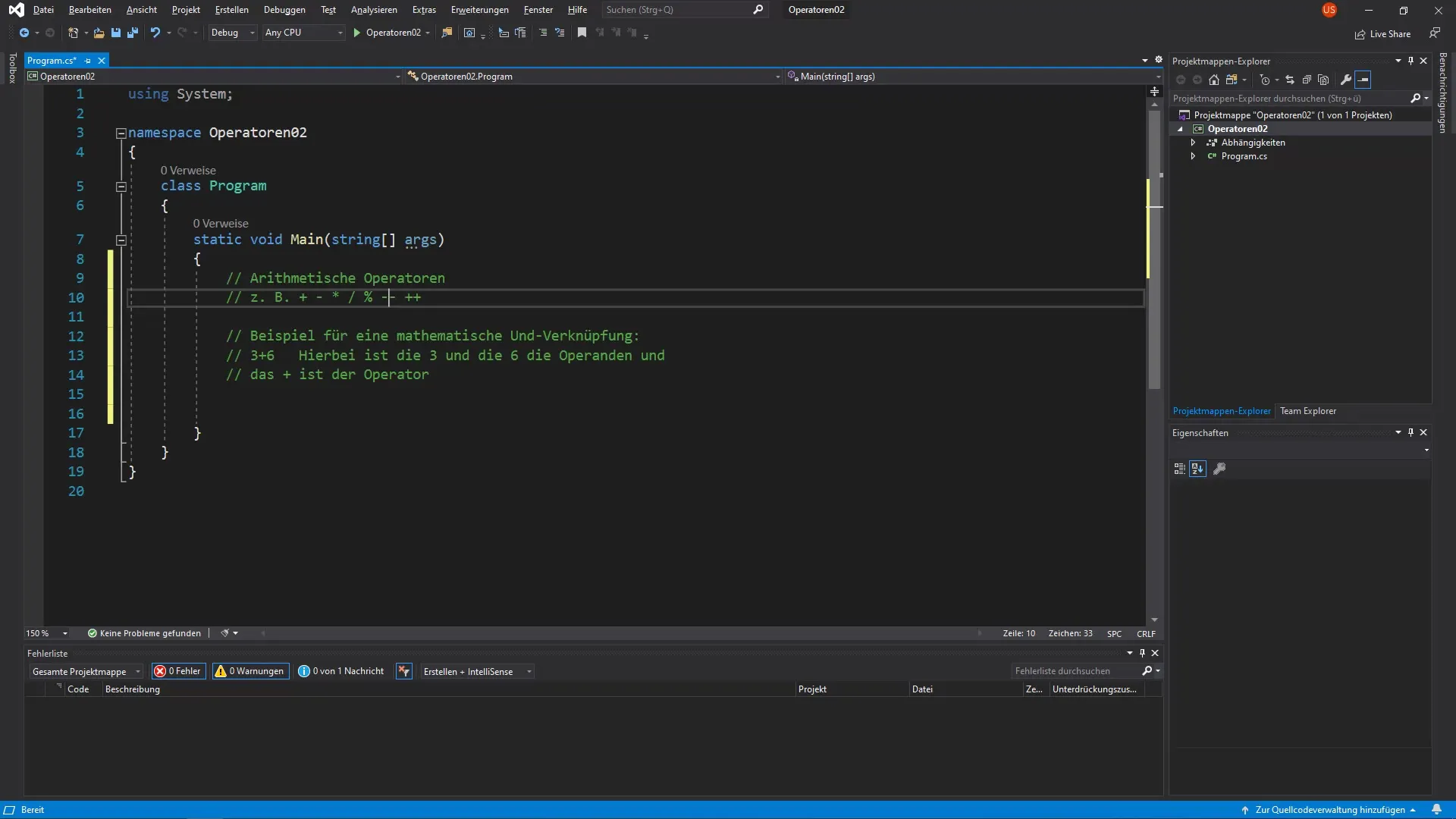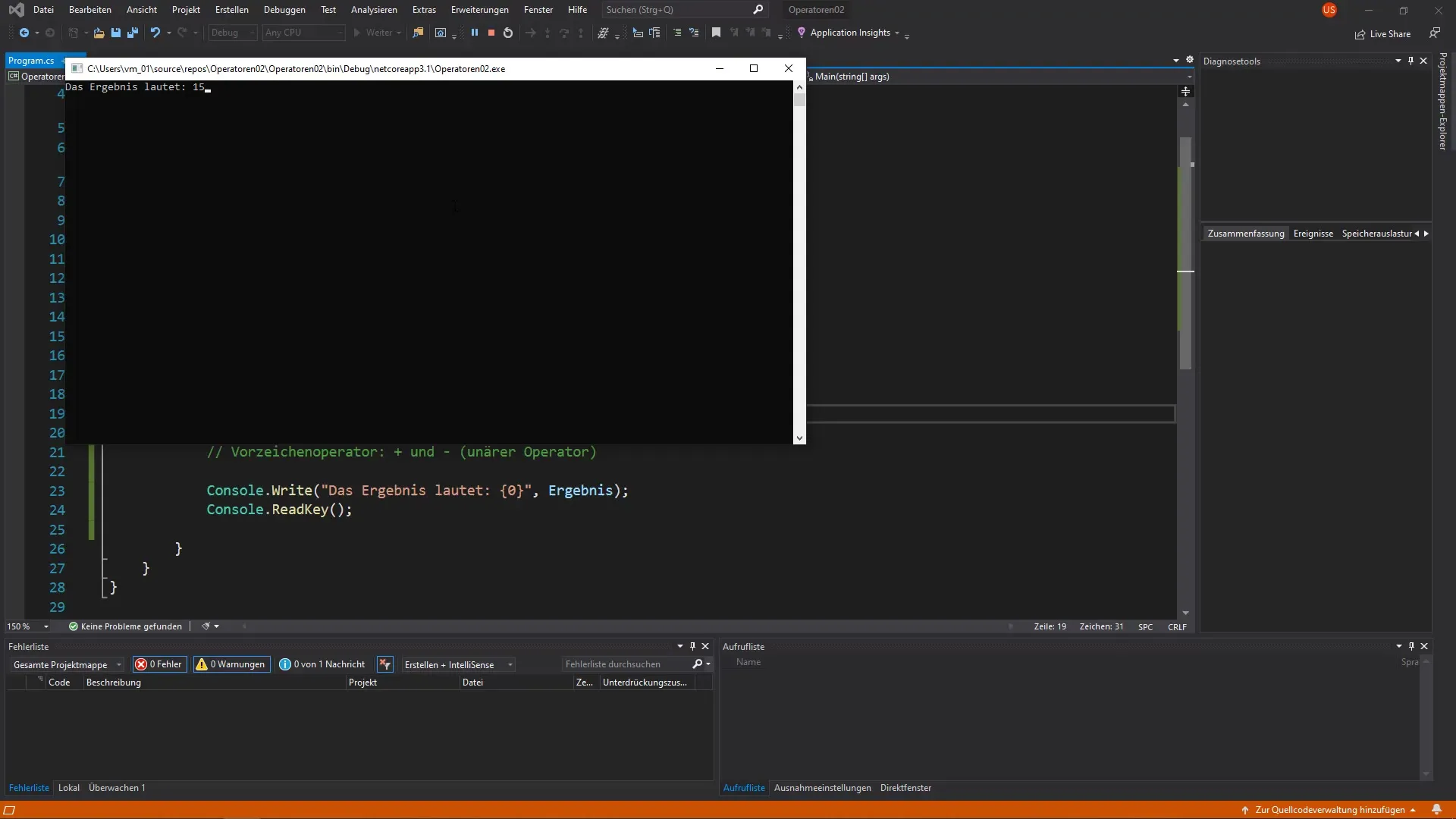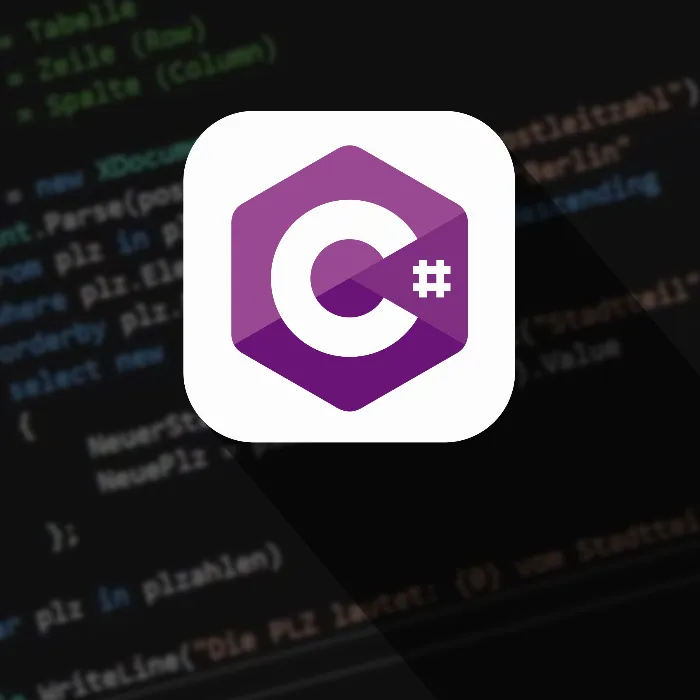Get ready for an important component in C# programming: the arithmetic operators. These operators allow you to perform mathematical calculations and are the foundation on which many programs are built. Without them, programming simply wouldn't be the same. Let's dive deeper into how these operators work and go through practical examples together.
Key insights
- Arithmetic operators allow basic mathematical operations in C#.
- You can use variables to store values and perform calculations with them.
- Be careful with sign operators, which can change the value of an operand.
- The modulus operator returns the remainder of a division.
- Increment operators change the value of a variable by one.
Step-by-Step Guide
Now let's go through the core concepts of arithmetic operators. We will go through examples step by step and pay attention to important points.
1. Basic arithmetic operations
Let's start with the basics of arithmetic operations. Suppose you have two numbers: 3 and 6. The plus sign “+” is the arithmetic operator that we will use.
Here, 3 and 6 are the operands, and the result of this addition is 9. Let's see how this is implemented in C#.

2. Using sign operators
In addition to the basic operations, there are also sign operators that can change the value of an operand. Suppose you want to negate the value of variable 2, which is 6.
The result of this operation is -3, as variable 2 became negative. This illustrates how sign operators work.
3. The modulus operator
Next, let's look at the modulus operator, represented by the percent sign “%”. This is especially useful when you want to calculate the remainder of a division.
If you perform the above, you will get the remainder of 15, as 100 divided by 17 leaves a remainder of 15.

4. Prefix increment operations
Next, we look at prefix increment operations, which are performed with “++”. These increase the value of a variable directly and immediately.
Here, the value of variable1 is increased by 1 before it is inserted into the result. So, the result is 101.
5. Postfix increment operations
In contrast, there are also postfix increment operations, which place the “++” after the variable. The result of this operation gives you the original value first and then increments the value in the next line.
Here, you will still see 100 in the first line, but in the next line, variable1 will be increased by 1.
6. Importance of operators in loops
The use of increment operators is particularly important when working with loops, which are one of the core components of programming. They help you efficiently increase values and control loops. Understanding these operators will be immensely beneficial in the future as you delve into more advanced topics.
Summary – Understanding Arithmetic Operators in C#
In summary, we have extensively covered arithmetic operators in C# and learned how they work. You now know how to perform basic mathematical operations, change the sign of numbers, and calculate the remainder of a division. You are also aware of the differences between prefix and postfix increment operations, which will help you make your programs clearer and more efficient.
Frequently Asked Questions
What are arithmetic operators?Arithmetic operators are symbols used in programming to perform mathematical calculations.
How do I negate a number in C#?Use the sign operator “-” before the number, e.g., variable3 = -variable2.
What does the modulus operator do?The modulus operator % returns the remainder of a division.
What is the role of increment operators?Increment operators increase the value of a variable by one, which is important for loops and counting variables.
How do prefix and postfix increment operations manifest?In prefix increment, the value is immediately increased, whereas in postfix increment, the original value is used first.


